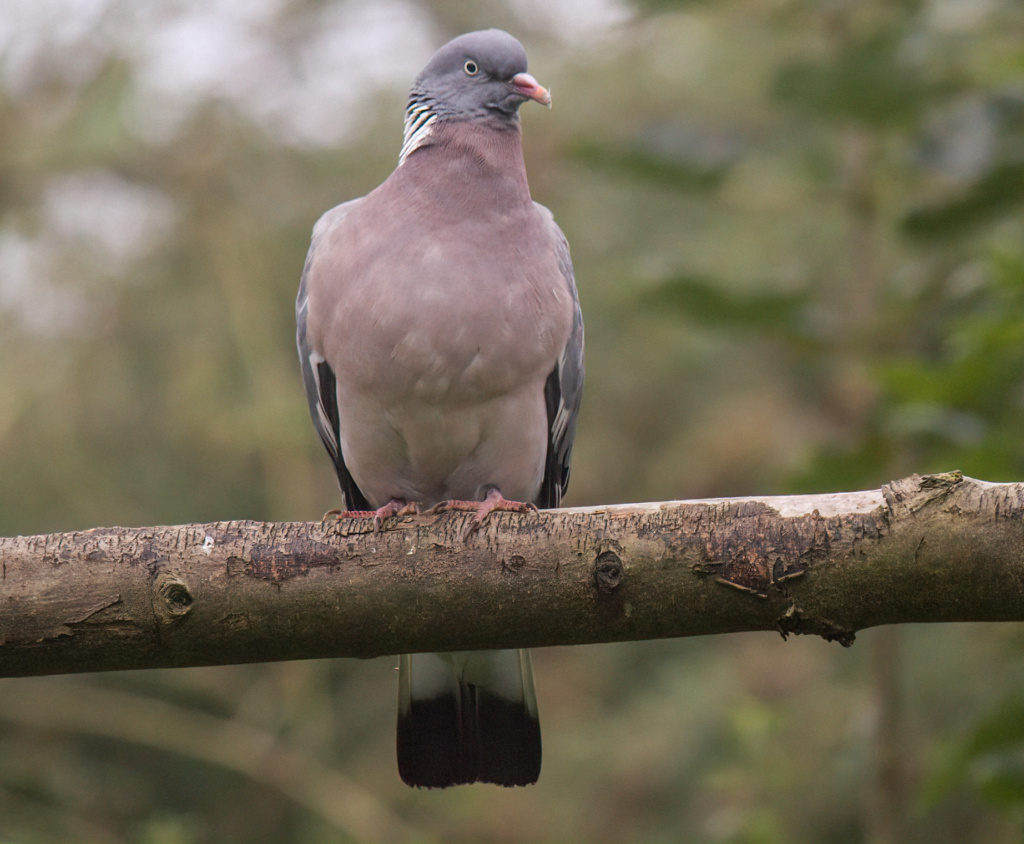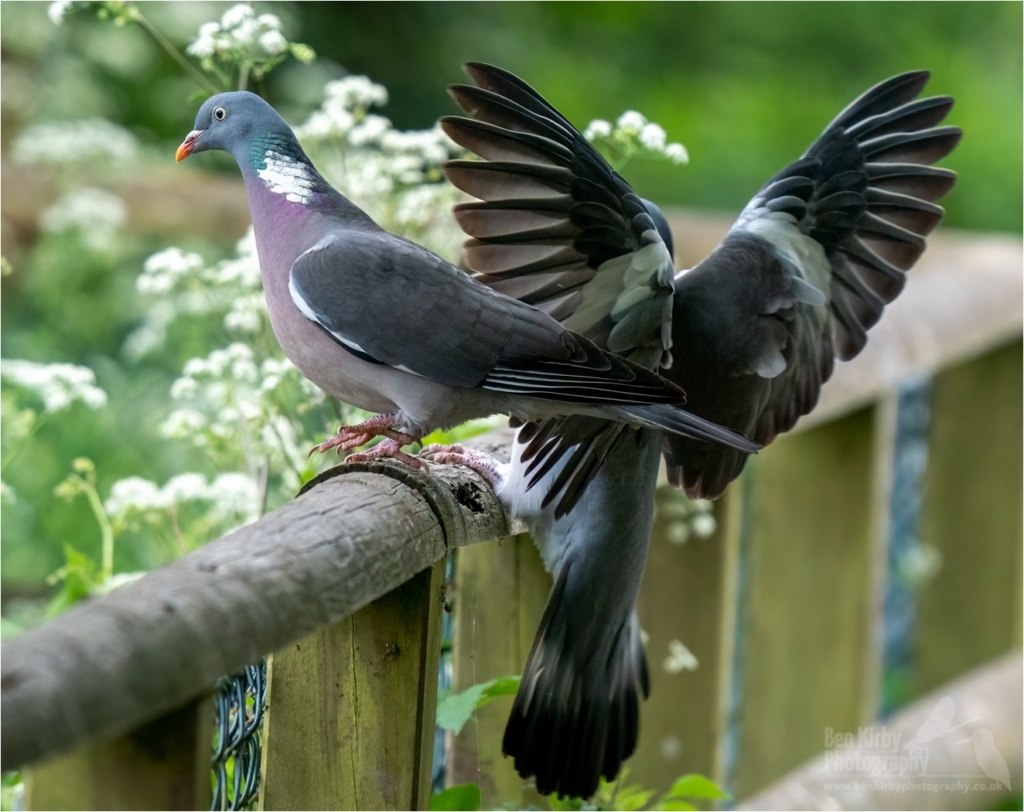Have you seen the bird of the month?
For January 2023, it is the: Woodpigeon (Columba palumbus)

Where can I find them?
They are common within the reserve and can be seen or heard in most areas. The best place to look is along the Main Valley Floor.
About the species
The Woodpigeon is the UK’s largest and most common pigeon. They are largely grey with a white neck patch and white wing markings, visible during flight. You may hear their cooing call before you see them.
They can easily be distinguished from the similar stock dove and feral pigeon by its pink breast.
The average life span of a Woodpigeon is around three years.
The species is on the UK amber list, meaning its population and conservation status is of moderate concern.
They eat crops like cabbages, sprouts, peas and grain. Also buds, shoots, seeds, nuts and berries.
What do they sound like?
Their song is a familiar sound and has been described by the BTO (British Trust for Ornithology) as sounding like ‘my toe bleeds, Betty’, ‘take two cows, Taffy’, or ‘a proud Wood-pig-eon’
When they take off into flight, you may hear what sounds like a pair of hands being clapped.
Where do they nest and what is the nest made from?
Breeding normally begins in April. Nests are built out of twigs and located in a tree or buildings. The eggs are smooth and shiny. Incubation normally is around 27 days.

If you manage to photograph a Wood Pigeon, within the reserve, why not share it on our Facebook page?




